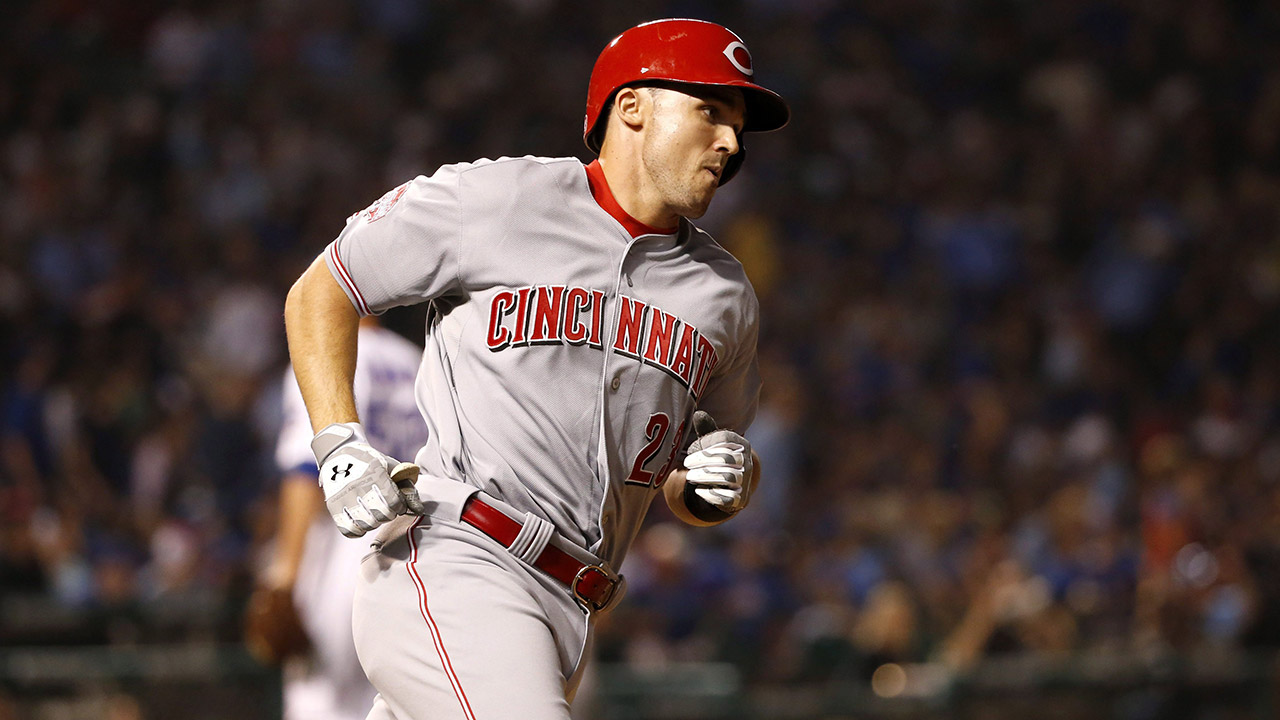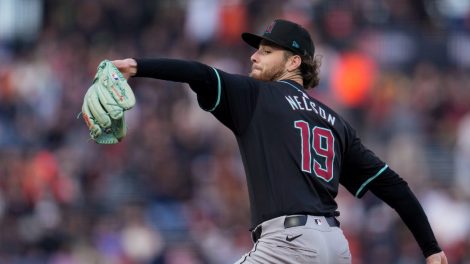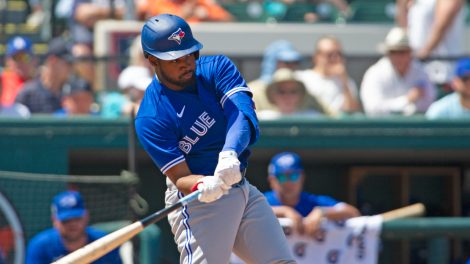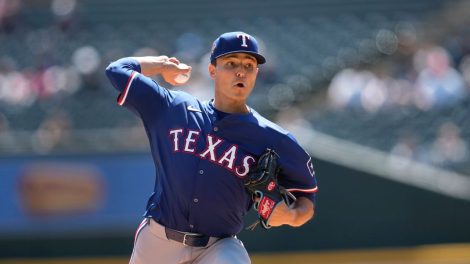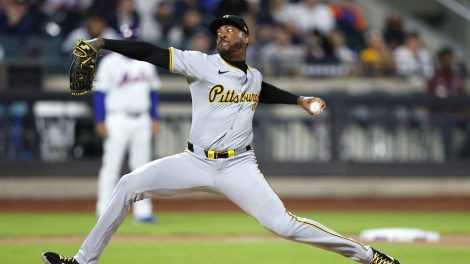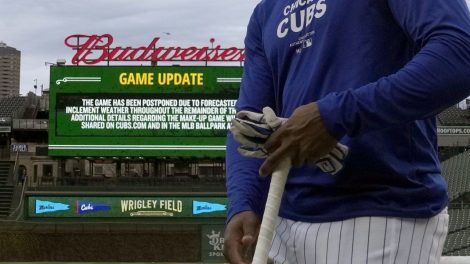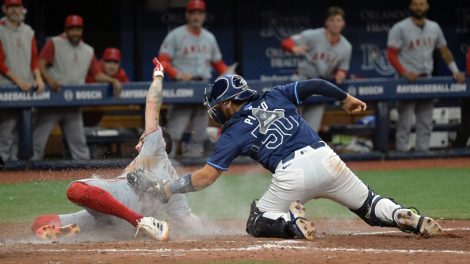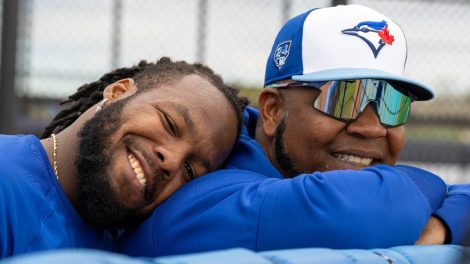It’s been a bleak free-agent market for a bleak holiday period. A full-scale, Solarte eclipse of meaningful off-season moves.
Most of us expected that by Jan. 10 the Toronto Blue Jays would have added more than Yangervis Solarte and Aledmys. But if it means anything, there’s a whole lot of that unfinished business sentiment around the game, especially considering the background noise at the Winter Meetings suggesting the trades of Giancarlo Stanton and Marcell Ozuna by the Miami Marlins would finally set the market in motion.
An optimist would say that at least the Blue Jays haven’t rushed into a multi-year commitment (hello there, Kendrys Morales) or tossed out any hard-and-fast deadlines (see: Edwin Encarnacion) as they did last off-season. Further, those of an optimistic bent might note that the Blue Jays have very much stuck to a common-sense approach that was simple, if not exactly the most exciting for public consumption or ticket sales.
[snippet id=3305549]
This approach is to operate under the assumption that Troy Tulowitzki and Devon Travis won’t be healthy enough to play many games together; make sure their replacements offer more offensively than the team received from the 754 combined at-bats in 2017 given to Ryan Goins and Darwin Barney without investing so much that you’re hamstrung if a miracle occurs and Tulowitzki and Travis are healthy. Then focus on the outfield, where the heavy lifting was always destined to be done.
So far, nothing’s changed on that front.
Blue Jays general manager Ross Atkins has been clear that outfielder Anthony Alford won’t break spring training with the team even with a camp for the ages; that he prefers to bring up core prospects in-season, preferably when the team is doing well, as opposed to putting them under the spotlight right away in April. It’s also been clear – with a little tea-leaf reading – that opening the season with an outfield of Steve Pearce, Kevin Pillar and Teoscar Hernandez is no bueno for this front office.
The Blue Jays outfield needs to be much better offensively and defensively, and in a perfect world upgrades would occur at two of the three spots with the likes of Adam Duvall more of a possibility than Lorenzo Cain or Andrew McCutchen.
The Blue Jays addressed their infield/bench issues in adding Solarte and before him Aledmys Diaz (let’s be clear: if Gift Ngoepe makes the Blue Jays out of spring training it will be because somebody else has suffered an injury) without touching any of their core prospects, which with a hard decision on closer Roberto Osuna and, by everybody’s best guess, about $20 million in payroll space to play with, puts them in a position to address the outfield.
They have added another switch-hitter in Solarte, raising the possibility of three of them (Solarte, Justin Smoak and Kendrys Morales) in the lineup on an everyday basis. Just ask Cleveland Indians manager Terry Francona about the value of having a regular platoon advantage.
There have been several reasons posited for the slow-developing market, ranging from the notion of group-think brought on by so many general managers coming from similar backgrounds and mentors – bolstered by cadres of similarly-inclined analytical assistants – to a desire to keep financial powder dry for next winter’s big free-agent class.
Other suggestions have focussed on the control of the market for prime position players by agent Scott Boras, who represents J.D. Martinez, Mike Moustakas and Eric Hosmer, as well as pitchers Jake Arrieta and Greg Holland, to the impact of the Marlins essentially putting all of their position players on the market.
At the Winter Meetings one player agent said he also believed the fact that many of this year’s free agents are coming off fairly healthy deals, where they were already earning double-digit salaries, would make them pickier than usual.
“Especially with guys like Hosmer, Moustakas and Martinez, who’ve never indicated they wouldn’t consider returning to their old teams,” the agent added.
It’s likely a combination of all of those things, bolstered by the fact that teams are more comfortable when it comes to predictive analysis of aging players and, as a result, less willing to take a chance that the mid-30-year-old player or pitcher they’re interested in might be the outlier who doesn’t blow up in the third year of a five-year contract. More than ever there is a premium attached to youth, especially when it comes to position players who are cost-effective. So the enticing prospect of a Christian Yelich or J.T. Realmuto must surely appeal to both big and small-market teams.

How slow has this off-season been? So slow that some of the game’s leading opinion-makers have suggested the Major League Baseball Players Association ought to take a deeper, almost counter-intuitive look at free agency, not from the vantage of point of collusion, but whether or not a trade-off might be in order to lower the service time requirements for free agency. Or instituting some kind of restricted and unrestricted free agency.
That’s a matter for the next collective agreement, however. Let’s see what next season’s cornucopia – the greatest free agent class of all time – brings before we jump to that type of consensus.
The only collusion at work right now appears to be a collusion of common sense and market factors, creating yet another slow-moving cold front. The good news is spring isn’t that far away.

